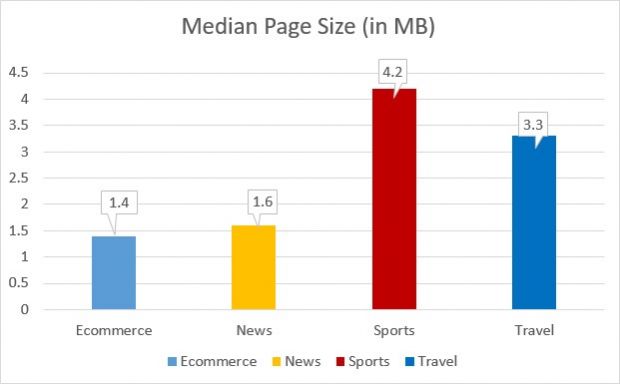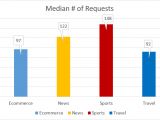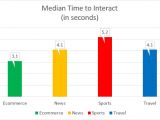A study analyzed the Web performance of top websites in four industries and found that webmasters, despite advancements in Web technologies and a plethora of Web optimization tools, fail to take advantage and still deliver slow and sluggish websites, even in 2016.
Radware's 2016 State of the Union (Desktop Edition) report recorded the TTI (Time To Interact) and Load Time of popular websites in the e-commerce, news, sports, and travel industries.
Their findings highlight that websites from all categories suffer from the same mistakes as they did in previous editions of the same report, and instead of correcting, most webmasters seem to have exacerbated their previous issues.
Webmasters have failed to learn from past mistakes
In short, Web pages seem to have grown in size year after year, the number of resources (JS and CSS) have increased dramatically, and most images are fairly large and unoptimized.
The dangers of running such websites reflect directly in a metric called user retention, which defines the number of users who end up staying on the website during and after the page load, compared to those who leave in search of a faster-loading alternative or one of the competition's websites.
According to Radware, on average, the homepages of e-commerce sites were the smallest, at around 1.4 MB, followed by news sites with 1.6 MB, travel sites with 3.3 MB, and sports sites with 4.2 MB.
While this was to be expected since the webmasters of e-commerce sites tend to put a lot more effort into performance and SEO optimization, 1.4 MB is still a large file size, especially if we take into account the numerous advancements made with HTML5 and CSS3.
For the number of Web requests, travel sites had an average of 92 HTTP requests, followed by e-commerce sites with 97 requests, news sites with 122 requests, and sports sites bringing the rear once again with a whopping 148 requests.
Popular sports sites are the most sluggish websites
A more important factor is TTI, the time from when the user presses "Enter" on his keyboard to the moment when he can interact with a website's elements, such as menus, banners, or links.
Here, e-commerce sites were once again the fastest, with 3.1 seconds, followed by news sites and travel sites with 4.1 seconds, and then yet again, sports sites with 5.2 seconds.
But when it came to image optimization, this is where things were truly disastrous, with only 10 percent of e-commerce and sports sites properly compressing their images, 8 percent of media sites, and only 6 percent of travel sites.
All of the above are worrying trends showing that in spite of the presence of powerful Web optimization techniques, most webmasters fail to follow industry best practices, and the Internet's most popular sites pose a bad example for the rest of the smaller sites.

 14 DAY TRIAL //
14 DAY TRIAL // 



